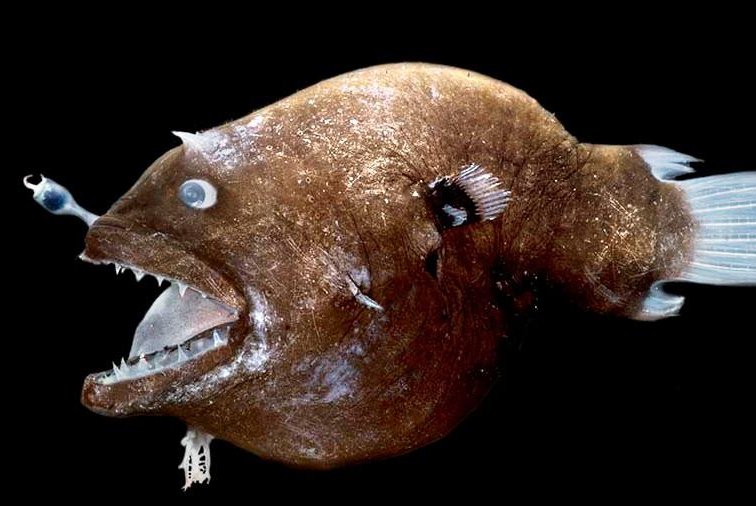Anglerfish light their lamps with glow-in-the-dark bacteria from the surrounding ocean water. Photo by Danté Fenolio/DEEPEND Consortium/Cornell
Oct. 1 (UPI) -- Most female anglerfish boast a fishing-rod like structure extending from their head. At the end of the rod is a luminescent organ. New research suggests the lamp is lit by bioluminescent bacteria sourced from the surrounding seawater.
Though the bacteria is sourced from the ocean, the microorganism isn't capable of subsisting on its own.
"In previous work that I had done, we found for the symbionts of deep-sea anglerfish that the bacteria have undergone genomic reductions; they've lost a lot of genes, suggesting that they are probably obligately dependent on their host," Tory Hendry, assistant professor of microbiology at Cornell University, said in a news release.
Bacteria that spend most or all of their lives inside a host organism typically have a shrunken, simplified genome. The bacteria sheds the genes used for functions provided by the host.
Scientists wanted to find out how anglerfish acquire this unique bacteria. For their study, researchers collected seven species from six different anglerfish families. Scientists surveyed the DNA of the fish, as well as the DNA of the bacteria inside their lamps. Six of the fish shared the same species of bioluminescent bacteria, while the seventh featured a specialized bacteria species.
Though the six anglerfish species with the same bacteria were caught in disparate parts of the world, from the Gulf of Mexico to the Cape Verde islands, the DNA of their symbionts was 99 percent identical.
"The only way to explain that is they must be picking up that symbiont from an environmental population," Hendry said.
Symbionts are usually passed down from parents to offspring. As a result, the bacteria and host share a unique evolutionary lineage -- a genetic history that can be found in their co-evolving DNA. But the latest analysis, published this week in the journal eLife, revealed no such history among the anglerfish and their bacteria.
"You can just look at it and see that there's no pattern," Hendry said.
According to a previous study, anglerfish acquire their bioluminescent bacteria later in life, after the bulb at the end of their rod-like appendage has matured.
Scientists surmise anglerfish spew the bacteria in the ocean to maintain a communal population, which future generations can use to light their lamps. But how do the bacteria survive in the open ocean.
The bacteria feature granules that resemble a molecule called PHB. Bacteria produce and use PHB to store carbon and glucose, a kind of emergency food stash. The bacteria can use their stash to survive if it finds itself without a host.
"They're really long time periods that they stay in a state of stasis -- not really doing much but growing a bit until they find a host," Hendry said.















